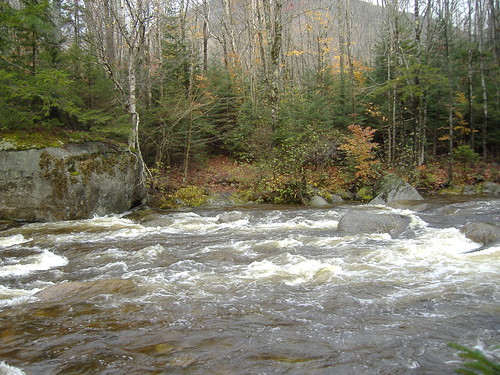Papa Bear
New member
Yeah, that's a problemAnybody want to try the diagonal approach?Frankly, if the stream is flowing so fast it's going to push me over the down stream boulders, I think I'll just pass.
There is one consideration that hasn't been mentioned thus far. We seem to assume that the problem comes as we meet the stream coming from the car. It's an easier decision to turn around.
I once found myself in the situation where I went hiking in the rain and in the morning the stream wasn't all that bad, but it rained all day and when I returned the stream had at least doubled in depth and my car was on the other side.There weren't too many options at that point. Spend the night in the rain without any camping equipment or look for a place to cross using the "diagonal"
method of course.
When we hit that 2nd stream in the photo, we were a day and a night from the trail head. We camped in pouring rain. Next morning the stream was still impassable so we hiked to a logging road, then to a back road, hitched to town, got dried out and got a ride around the obstacle. So for us the 100 mile Wilderness was around 90 miles. Stuff happens!
At least when you're backpacking, you presumably have your house, kitchen and pantry on your back. Not like the guy we met later who attempted that same stream, was swept away and lost his pack (and his dignity - but did keep his life).

